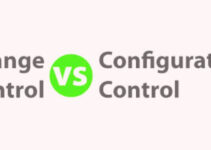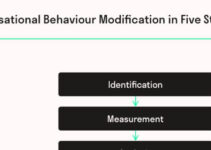Change management adoption metrics offer you qualitative and quantitative tools, measures, and KPIs to analyze the integration, implementation, and acceptance level of new change policies and practices. The metrics and KPIs offer you key insight and tangible data on how well the employees and stakeholders are executing the changes. Today, we’ll discuss adoption metrics change management; key benefits, tips, and strategies for improving it, and top change management adoption metrics.
Benefits of change adoption metrics
- Analyzing the effectiveness of the change efforts
- Taking proactive steps to deal with the changes
- Making informed decisions for the successful change program
- Recognizing the key success and resistance
- Tracking and evaluating the performance of the company
Steps to measure the change management adoption metrics
- Recognize and identify the relevant targeted group where you’re executing the changes
- Defining adoption criteria; achieving specific targets, completing training programs, or following new policies
- Gathering data about employees who have met the adoption rate criteria
- Calculating the adoption rate
Change adoption rate = (Employees that have followed the change / Total employees in the group) X 100
Top Adoption Metrics Change Management
Let’s discuss the top adoption metrics change management or change adoption metrics; they’re as follows;
Change Program ROI
Companies invest a significant amount of capital resources in the change program. Comparing return on investment benefits with the incurred expenses would let the company know the success rate of the change program. A higher ROI of the change program means that the change initiative has been successful.
Team Satisfaction Level
Companies should conduct interviews and surveys to gather the feedback of employees. It helps the company to measure and evaluate the employees’ satisfaction level with the change program. A higher employee satisfaction level means that the company should take steps to deal with their concerns and issues.
Post Implementation Review
Before implementing the change program, companies set goals and objectives for the change program. After executing the changes, they should compare the actual results with the desired outcomes that the company had been expecting it. The post-implementation review helps the company to recognize the key weak areas for future change programs.
Resilience Level
It is significant that companies should be aware of their resilience and capabilities to deal with disruptions and adapt to new changes. It allows the company to comprehend its capability to deal with changes and grow in the midst of changes.
Change Performance Index
Businesses and companies employ multiple combinations of KPIs (key performance indicators) like employee resistance level, engagement of stakeholders, and adoption rate. Collectively, it provides the effectiveness of the change program.
Impact Factor
It means evaluating and analyzing the impact of the change program on the company’s organizational structure, system, and processes. It allows the company to analyze the potential implications and overall complexity of the change imitative.
Evaluating Preparedness
It is significant that companies should measure their readiness and preparedness for the change project. They do so by analyzing various factors; employees’ skill and expertise, leadership and management support, and tech adoption level. A higher score would imply the success rate of the change program.
Analyzing Communication
Open communication plays a key role in the change program. Companies should analyze the reach, frequency, and quality of communication levels for change projects. It means helping employees and team members to clarify their roles, be aware of the expected outcomes, and give reasons for the change project.
Stakeholder Involvement
Measuring and evaluating the engagement level of the stakeholders in response to the change project. It means offering necessary resources, their role in the decision-making, and participation in the meetings for the change program.
Employees’ Resistance
Companies should measure and evaluate the employees’ resistance rate against the change project. A higher employee resistance level means ineffective change management processes, not being on board for the change project, and poor communication.
Tips for Better Adoption Metrics Change Management
Let’s discuss the main tips and strategies for improving change adoption metrics and they’re as follows;
- Refining and making adjustments in the change management policies and procedures based on the concerns and feedback of customers
- Rewarding and recognizing the employees and team members who are adopting the changes
- Communication the reason for the change project and the benefit it brings to the organization
- Conducting training programs to improve the skill and expertise of employees and team members for the change project
- Bringing all employees, team members, and stakeholders on board for the change program from the start of the project
Conclusion: Adoption Metrics Change Management | Change Management Adoption Metrics |Change Adoption Metrics
After an in-depth study of the adoption metrics change management; we have realized that change adoption metrics are highly significant for the organizational change initiative. If you are learning about the change management adoption metrics; then you should keep in mind the abovementioned top metrics and KPIs, improvement tips and strategies; benefits, and steps for measuring the adoption rate.
Ahsan is an accomplished researcher and has a deep insight in worldly life affairs. He goes Live 3 days a week on various social media platforms. Other than research writing, he’s a very interesting person.


